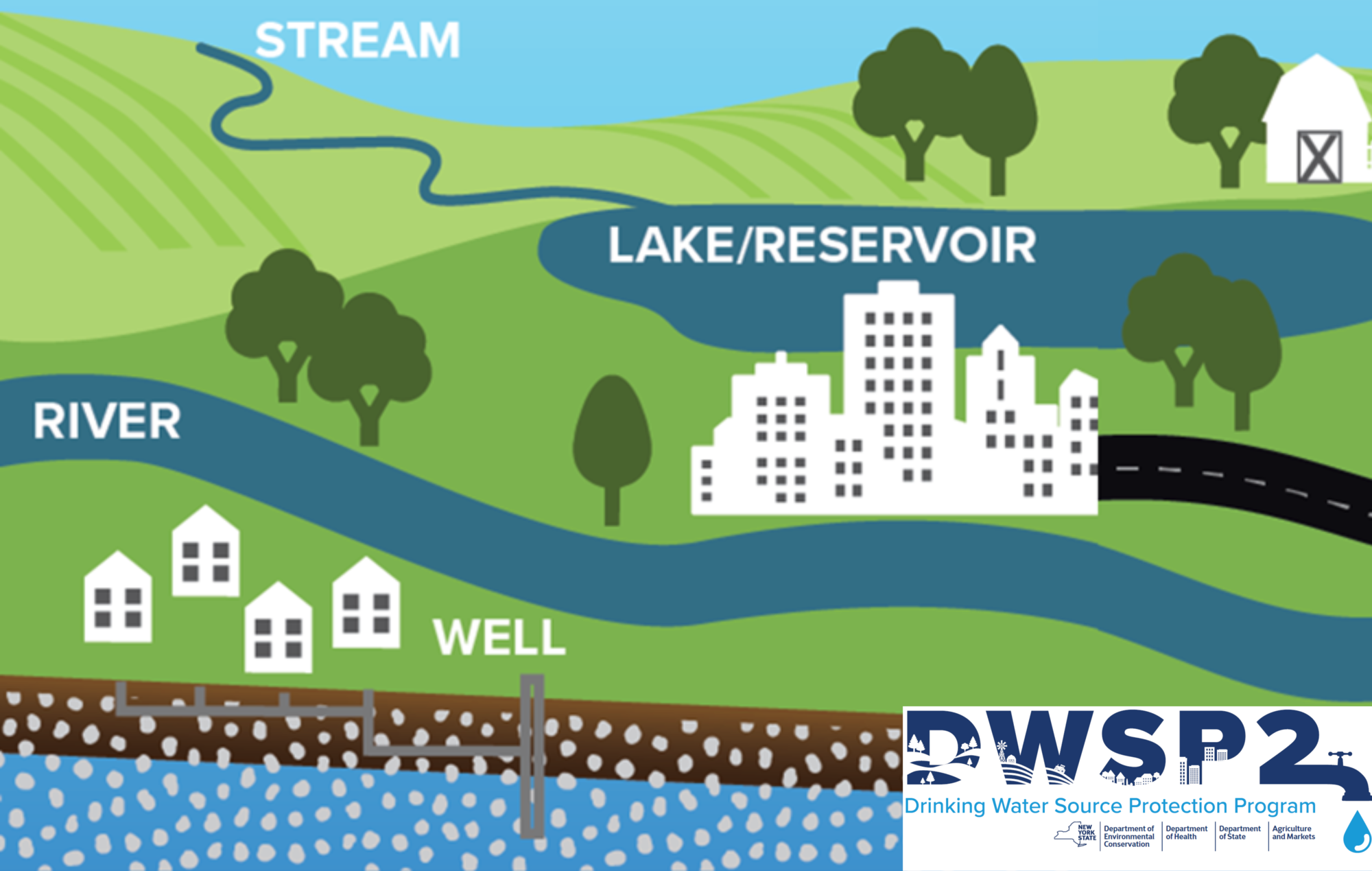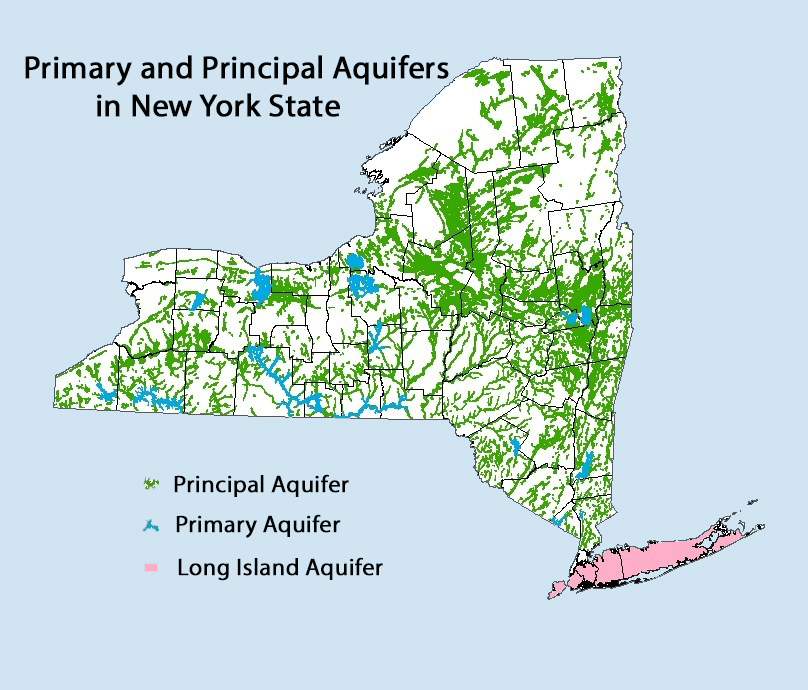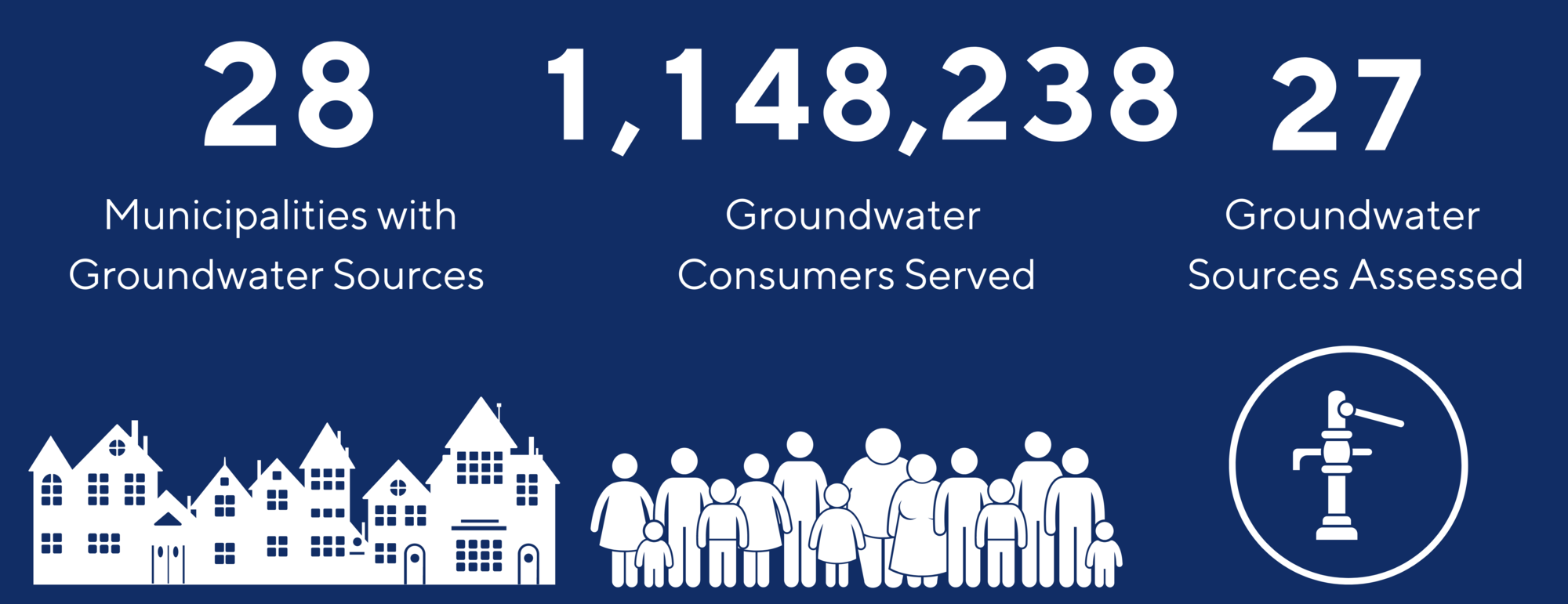DWSP2 March Newsletter: Get to Know New York's Groundwater
The New York State Department of Environmental Conservation sent this bulletin on 03/08/2023 03:00 PM EST |
| DEC Delivers - Information to keep you connected and informed from the NYS Department of Environmental Conservation |
| View in browser |
|
|
Get to Know New York's Groundwater |
|
In this month’s newsletter, the Drinking Water Source Protection Program (DWSP2) is celebrating Groundwater Awareness Week and exploring groundwater resources in New York State. In New York, about one in four people rely on groundwater as their primary source of drinking water. Groundwater is an important resource that sustains many of our communities, especially in areas where lakes, rivers, or reservoirs are not plentiful. What is Groundwater? Groundwater is water that occurs below your feet, in the spaces between sand, sediments, and rock formations. We withdraw groundwater through wells, both for communities and individual homes to use for drinking water. The way water gets into the ground is by rain or snow slowly seeping into or filtering through the soil. These drops will accumulate in areas that can hold water between the spaces in the soil. It may sound kind of like an underground lake, but it isn’t… because the water is in the spaces between soil particles, like sand or gravel. This is called an aquifer. You can think about an aquifer like a cup filled with gravel with water in it. People and communities access groundwater by drilling wells. A well is a long tube or pipe that is placed down into an aquifer, which almost acts like a big straw. Groundwater wells can be shallow, say 20 feet, or as deep as hundreds of feet. Just like when you suck on straw to drink a glass of water, pumps pull water from the aquifer so we can use it. A homeowner may have a private well to provide water to just one house. Some towns and cities have several wells to serve their entire community. Towns and cities that use groundwater for their public water system, and treating the groundwater before distributing it to customers.
Groundwater in New York State In New York State we have 3 main types of groundwater sources: carbonate rock, bedrock and sandstone, and sand and gravel aquifers. The differences between these types of groundwater sources impact how much water they can hold and how susceptible they are to potential contaminant sources.
This map shows the location of New York's most productive aquifers. Although bedrock formations are a significant source of groundwater supply, the most productive aquifers in New York are generally located in sand and gravel aquifers, also known as unconsolidated aquifers. These areas are shown in blue and green on the map. Primary Aquifers, in blue, are heavily utilized because they yield a great deal of water. Principle Aquifers, in green, are not as heavily utilized. Although other areas in upstate New York are capable of supplying groundwater, the areas featured on this map are the most reliable sources. The Long Island Aquifer, shown in pink, accounts for nearly 3 million users dependent on the underlying sole-source aquifer system. As the name implies, Long Island’s sole-source aquifer system is the only source of water available to meet the needs of the Island’s population. The levels of nitrogen in Long Island’s waters is higher than normal. NYS DEC’s Long Island Nitrogen Action Plan (LINAP) works to reverse the trend of nitrogen pollution in Long Island’s ground and surface water. LINAP focuses on how best to reduce nitrogen loading to groundwater and surface water through technical, management, and regulatory/policy actions. In some areas of Long Island, freshwater pumping has resulted in saltwater intrusion into the aquifer system and has also impacted streams, ponds, and coastal wetlands and estuaries that rely on groundwater discharge to sustain them. Why is Groundwater important? Groundwater provides public drinking water to nearly five million New Yorkers. Despite being below ground, groundwater resources can be vulnerable to contamination that originate at or near the surface. This is particularly true in areas where porous soil or shallow bedrock exist. Once contaminated, groundwater can be very difficult and costly to cleanup. Potential contaminant sources for groundwater can come from: septic systems and fertilizer use, chemical storage and spills, and commercial and industrial processes. Source water protection efforts, like DWSP2, can help prevent avoidable contamination and ensure a safe drinking water supply now and into the future. DWSP2 is a locally led, state-supported program that empowers municipalities to take action to improve and protect their public water sources and surrounding environment. The program offers free technical assistance to develop and implement community-specific drinking water source protection plans. DWSP2 is designed to build off previous work, help align priorities, and fill gaps within a municipality’s current and future source water protection efforts. During the DWSP2 planning phase, your community will identify potential contaminant sources that could impact your source of public drinking water, regardless of whether you use groundwater or surface water. You will work with a free technical assistance provider to develop actionable source water protection methods that address any potential contaminant sources near your drinking water source. Because we know each community has different concerns and priorities, DWSP2 can be easily tailored to your community’s needs. In 2022, municipalities with groundwater sources made up nearly 50% of our DWSP2 plans, totaling 28 municipalities with public groundwater supplies.
Together We Can Protect Your Drinking Water Source Regardless of whether your public water supply comes from groundwater or surface water, your community can implement protection methods to prevent contamination through DWSP2. Even though your water operator tests and monitors your water to ensure it’s safe to drink, there often are additional measures your municipality can take to prevent contamination issues before they enter your water supply. What’s New with DWSP2 We recently attended New York’s Association of Towns Annual Conference in New York City where we were able to meet with municipal leaders from all around the state. We were grateful for the opportunity to talk face-to-face with some of our DWSP2 participants and tell others about this valuable program.
On March 1st, we held a statewide webinar titled Navigating Grant Funding: Municipal Success Stories with over 300 participants. This webinar shared successful strategies for municipalities to access and manage grant funding. We highlighted approaches from municipalities of various sizes, across New York State, that have been used to secure grant funding. Speakers shared information, including how they accessed grant funds, what barriers they have overcome, lessons learned, the skill sets needed, and who are the key players necessary to access grant funding. If you were unable to attend this webinar, you can view the recording. It may be helpful if your community is thinking about accessing grant funding to support the implementation of your DWSP2 Plan. Useful Links!A one-stop-shop for links found throughout this newsletter.
Share Your ThoughtsHave you begun the DWSP2 process? Or do you have a program or are you aware of a program relevant to source water? Send in any helpful hints or information at source.water@dec.ny.gov and we may highlight them! Sign UpTo sign-up for the DWSP2 newsletter, visit the DWSP2 webpage. Newsletter ArchiveMissed last month's edition? Visit the DWSP2 Newsletter Archive to stay up to date. |


 This graphic shows homes connected to a well that draws drinking water from the aquifer below.
This graphic shows homes connected to a well that draws drinking water from the aquifer below.

